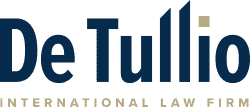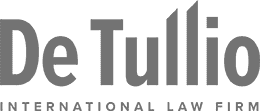Italy’s 2019 Stability Law – Flat-Rate Tax Scheme
Italy’s 2019 Stability Law – Flat-Rate Tax Scheme
By introducing the flat-rate tax scheme in 2018, the Italian government’s objective was to boost employment. In addition, the government aimed to reduce undeclared taxable income and employment irregularities. In the 2019 stability law, the government broadened the flat-rate tax scheme.
The scheme therefore now extends to individuals operating in, ‘the arts and independent professional activities’ sector. This includes individuals generating income from investment property rentals and second homes.
As well as replacing Irpef, Irap and additional taxes, the scheme establishes a tax rate of 5% for the first 5 years. This subsequently rises to 15% from the sixth year onwards. Neither VAT nor other taxes are payable.
The flat-rate tax scheme also provides an opportunity to regularise previously undeclared activities to the Italian tax authorities.
Foreign property owners may not realize that they need to declare income from rental or investment properties, even if it is seasonal and infrequent. However, property owners may be subject to heavy penalties in case of an audit by the Italian tax authority.
Flat-rate tax calculations in the 2019 Stability Law
Taxable income in the flat-rate scheme is determined by applying profitability coefficients. These coefficients vary according to business activity. A profitability coefficient of 40% on revenues is applicable to accommodation, lodging, lettings and B&B activities.
To illustrate this:
Mr. Hunt owns a property in Tuscany, which he starts using as a seasonal holiday letting business. Mr. Hunt opts to apply for the flat-rate tax scheme.
Revenues from Mr. Hunt’s first year of lettings are € 40.000.
Based on a 40% profitability coefficient, taxable revenues would therefore amount to €16.000. At a 5% tax rate, Mr. Hunt would be liable for a tax payment of €800.
Had Mr. Hunt opted to use the personal income tax scheme, he would have paid tax of approximately € 4.300.
As you can see from the example above, for the purposes of calculating income tax, expenses are not included – income tax calculation is exclusively on revenues. Only social security contributions (INPS) are deductible from revenues.
The flat-rate tax scheme requires social security cover
It is worth bearing in mind that anyone wishing to take advantage of the flat-rate scheme, must have social security cover. Contributions are a percentage of revenues. However, a reduction of up to 35% of contributions is available and in certain cases an exemption is possible.
Any individual planning to start-up a business activity in Italy qualifies for the flat-tax scheme, provided that the individual has not carried out the same activity in the past three years and that revenues do not exceed €40.000 per annum.
Foreign residents and non-residents, who generate an income from letting their property in Italy, wishing to benefit from the flat-tax scheme, must notify the Italian tax authorities through a Notice of Business Start-Up.
Finally …
If you need help to understand your personal situation, please get in touch with us or seek advice from a qualified accountant registered with the ODCEC, the Italian professional accounting association of certified public accountants, auditors and advisors.











